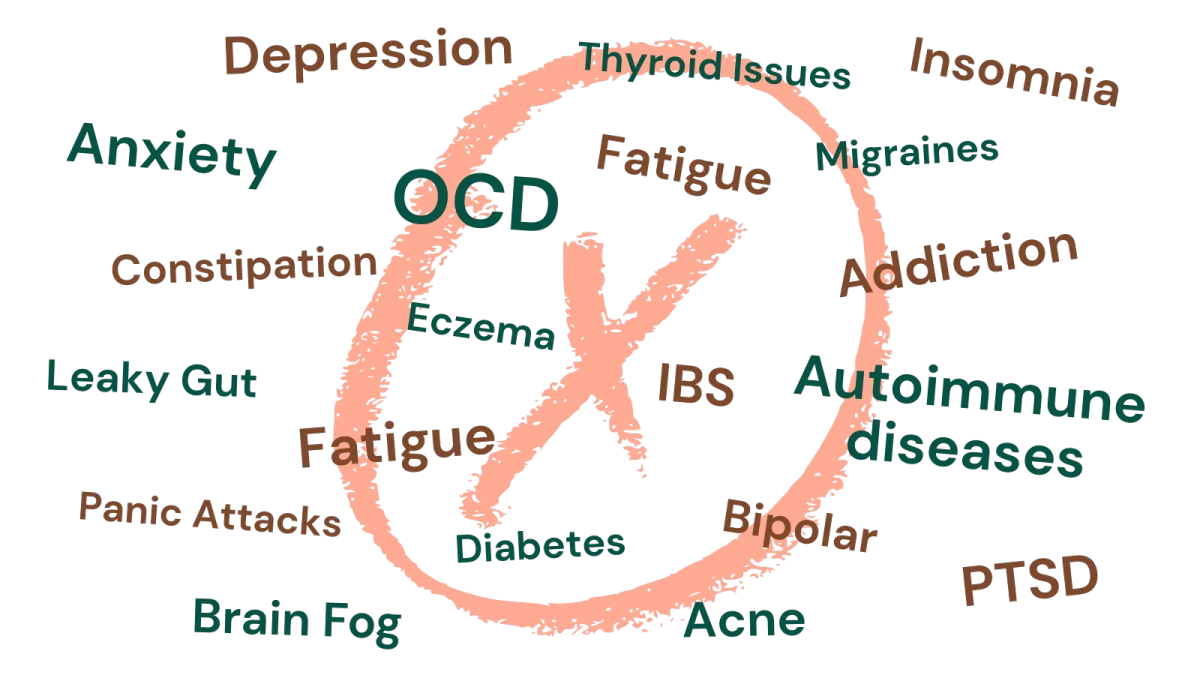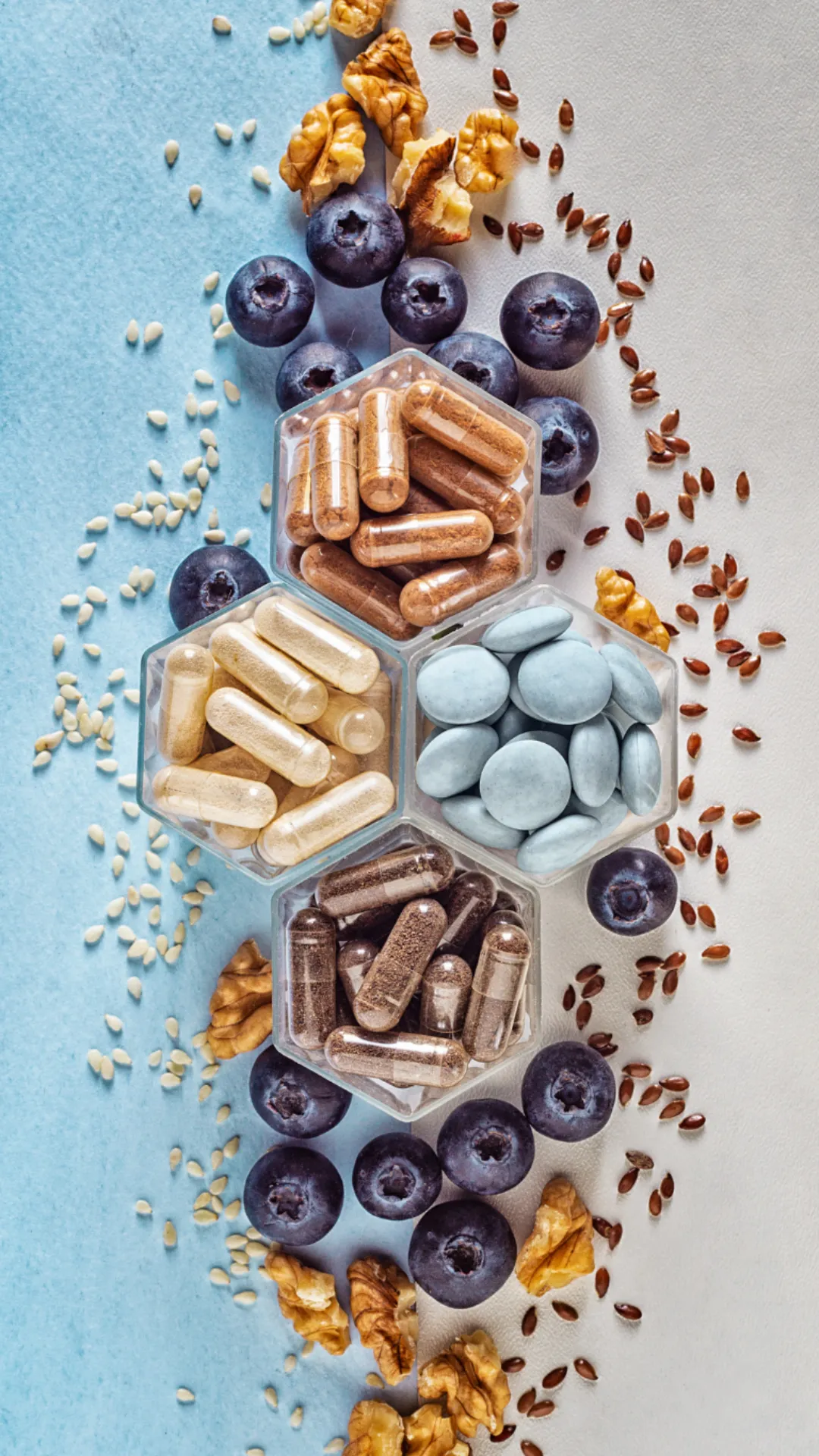Holistic psychiatry for lasting healing serving children, adults, and families
You can also contact us via:
+1 (262)-955-6601

About Us
Trinergy Health:
Your Path to Lasting Mental Wellness.
Welcome to Trinergy Health, where we prioritize your holistic mind-body well-being! Our flagship program: Psychiatry 2.0 is designed to provide comprehensive care for a broad spectrum of mental and physical health conditions, focusing on removing the root causes to restore physiological function at all levels, and foster lasting healing and balance.
Our guiding philosophy is simple: Heal your body to heal your mind. We specialize in blending Functional Medicine and Ayurvedic wisdom to help you overcome chronic mental and physical ailments. We focus on one essential goal: restoring your deepest mind-body function and balance.

About Us
Trinergy Health: Beyond Symptoms: Your Path to Lasting Mental Wellness.
Welcome to Trinergy Health, where we prioritize your holistic mind-body well-being! Our flagship program: Psychiatry 2.0 is designed to provide comprehensive care for a broad spectrum of mental and physical health conditions, focusing on removing the root causes to restore physiological function at all levels, and foster lasting healing and balance.
Our guiding philosophy is simple: Heal your body to heal your mind. We specialize in blending Functional Medicine and Ayurvedic wisdom to help you overcome chronic mental and physical ailments. We focus on one essential goal: restoring your deepest mind-body function and balance.
How many of these symptoms or labels would you like to resolve?





The problem is not you...
The problem is that the root causes of your health issues have never been addressed.
Until now.
All too often we are told our genes are bad, our chemistry is out of balance, and medications are the only solution. We are misdiagnosed, over medicated and end up feeling dissatisfied, frustrated, unheard, and unseen. And the reality is, psychiatric medications do not help majority of people and they cause harmful side-effects. But there is light at the end of the tunnel!
There is an Alternative Approach.
I will work with you to determine what’s really causing the myriad of issues you are struggling with. We will dive deep to get to the root cause in order to reduce your need for psychiatric medicines and help you confidently reclaim your health, harmony and vitality. With our program, it’s not just about symptom relief. We offer natural, safe and lasting holistic solutions to help you achieve your best, healthiest and most vibrant self.
If you are ready for this kind of medicine, click the button below.
It's time to start living.
How many of these symptoms
or labels would you like to resolve?





The problem is not you...
The problem is that the root causes of your health issues have never been addressed.
Until now.
All too often we are told our genes are bad, our chemistry is out of balance, and medications are the only solution. We are misdiagnosed, over medicated and end up feeling dissatisfied, frustrated, unheard, and unseen. And the reality is, psychiatric medications do not help majority of people and they cause harmful side-effects. But there is light at the end of the tunnel!
There is an Alternative Approach.
I will work with you to determine what’s really causing the myriad of issues you are struggling with. We will dive deep to get to the root cause in order to reduce your need for psychiatric medicines and help you confidently reclaim your health, harmony and vitality. With our program, it’s not just about symptom relief. We offer natural, safe and lasting holistic solutions to help you achieve your best, healthiest and most vibrant self.
If you are ready for this kind of medicine, click the button below.
It's time to start living.
Trinergy Health Foundational Framework
Choose the DTT™ Approach!
Address the Root Cause: Achieve True Mental Wellness, Not Just Symptom Suppression.
Stop the frustrating cycle of temporary fixes. At Trinergy Health, we move past surface-level symptoms to heal the body and mind from the core, ensuring your wellness is authentic, enduring, and natural.

Diet & Lifestyle
Solutions (D)
We investigate and optimize the fuel and habits that govern your health. We provide genetics-informed nutritional plans and proven lifestyle modifications to build a foundation of healing from the inside out.

Healing Trauma at
the Root (T)
We recognize the profound link between psychological trauma and physical inflammation. Our approach includes psychotherapy and mindfulness-based interventions to soothe the nervous system and address unresolved stress that manifests as 'dis-ease.'

Safe Toxin
Removal (T)
We guide you through safely identifying and removing environmental and biological toxins that undermine your health. This includes protocols like Ayurvedic cleanse protocols and comprehensive detoxification programs to restore systemic balance.
Trinergy Health Foundational Framework
Choose the DTT™ Approach!
Address the Root Cause: Achieve True Mental Wellness, Not Just Symptom Suppression.
Stop the frustrating cycle of temporary fixes. At Trinergy Health, we move past surface-level symptoms to heal the body and mind from the core, ensuring your wellness is authentic, enduring, and natural.

Diet & Lifestyle Solutions (D)
We investigate and optimize the fuel and habits that govern your health. We provide genetics-informed nutritional plans and proven lifestyle modifications to build a foundation of healing from the inside out.

Healing Trauma at the Root (T)
We recognize the profound link between psychological trauma and physical inflammation. Our approach includes psychotherapy and mindfulness-based interventions to soothe the nervous system and address unresolved stress that manifests as 'dis-ease.'

Safe Toxin Removal (T)
We guide you through safely identifying and removing environmental and biological toxins that undermine your health. This includes protocols like Ayurvedic cleanse protocols and comprehensive detoxification programs to restore systemic balance.
Meet Dr. Aruna
Founder of Trinergy Health
Dr. Aruna Nammi, MD, is the Holistic Psychiatrist and founder of Trinergy Health in Wisconsin. She is board-certified in Adult and Geriatric Psychiatry, as well as Integrative and Holistic Medicine, with additional training in Functional Medicine and Ayurveda.
She provides evidence-based, root-cause holistic mental and whole-body wellness solutions designed to help clients achieve health, harmony, and vitality...naturally!
Her Unique Approach
As a board-certified psychiatrist, Dr. Nammi recognized the limitations of traditional, medication-dependent practice. This realization led her to develop a unique approach that treats the whole person—mind, body, and spirit.
Dr. Nammi combines her deep understanding of conventional medicine with evidence-based natural therapies in a "meds-last approach." This dual expertise allows her to offer comprehensive, effective solutions focused on healing the root cause, not just managing symptoms. Her mission is to empower clients to achieve their best, most vibrant selves.

"In root cause medicine, we find that many different symptoms and "dis-eases" are merely a manifestation of the same underlying root causes showing up in various organ systems in the body. Hence, one comprehensive treatment to address the root causes will heal all organ systems at once. It is very common in my practice for people to see me for depression but also heal their thyroid disease, or lose weight, or clear their skin rash." - Aruna, MD
Meet Dr. Aruna
Founder of Trinergy Health
Dr. Aruna Nammi, MD, is the Holistic Psychiatrist and founder of Trinergy Health in Wisconsin. She is board-certified in Adult and Geriatric Psychiatry, as well as Integrative and Holistic Medicine, with additional training in Functional Medicine and Ayurveda.
She provides evidence-based, root-cause holistic mental and whole-body wellness solutions designed to help clients achieve health, harmony, and vitality...naturally!
Her Unique Approach
As a board-certified psychiatrist, Dr. Nammi recognized the limitations of traditional, medication-dependent practice. This realization led her to develop a unique approach that treats the whole person—mind, body, and spirit.
Dr. Nammi combines her deep understanding of conventional medicine with evidence-based natural therapies in a "meds-last approach." This dual expertise allows her to offer comprehensive, effective solutions focused on healing the root cause, not just managing symptoms. Her mission is to empower clients to achieve their best, most vibrant selves.

"In root cause medicine, we find that many different symptoms and "dis-eases" are merely a manifestation of the same underlying root causes showing up in various organ systems in the body. Hence, one comprehensive treatment to address the root causes will heal all organ systems at once. It is very common in my practice for people to see me for depression but also heal their thyroid disease, or lose weight, or clear their skin rash." - Aruna, MD
Beyond Symptoms: Mental Wellness Re-imagined
Healing Your Body Outside and In "Mental health disorders often arise from inflammation and other imbalances in the body. Our foundational philosophy is to Heal the body to heal the mind."
Your Path to Total Transformation
Holistic psychiatry addresses the root cause of the ‘dis-ease’—not just the suppression of symptoms—in order to heal the body and help you achieve mental wellness and balance.
The Three Pillars of Treatment

1. Whole Person Approach
A personalized, patient-centered approach that evaluates the whole person and offers a treatment plan to safely guide you back to health and vitality.

2. Root Cause Psychiatry
We address the root cause of the ‘dis-ease’—not just the suppression of symptoms—in order to heal the body and help you achieve mental wellness and balance.

3. Safe and Effective
We offer evidence-based modalities including diet, lifestyle modification, genetics informed nutritional supplements, psychotherapy and Ayurvedic herbs and cleanse protocols.
To learn more about treatment options, call the office or book a consultation online today.
Beyond Symptoms: Mental Wellness Re-imagined
Healing Your Body Outside and In "Mental health disorders often arise from inflammation and other imbalances in the body. Our foundational philosophy is to Heal the body to heal the mind."
Your Path to Total Transformation
Integrative or holistic psychiatry addresses the root cause of the ‘dis-ease’—not just the suppression of symptoms—in order to heal the body and help you achieve mental wellness and balance.
The Three Pillars of Treatment

1. Whole Person Approach
A personalized, patient-centered approach that evaluates the whole person and offers a treatment plan to safely guide you back to health and vitality.

2. Root Cause Psychiatry
We address the root cause of the ‘dis-ease’—not just the suppression of symptoms—in order to heal the body and help you achieve mental wellness and balance.

3. Safe and Effective
We offer evidence-based modalities including diet, lifestyle modification, genetics informed nutritional supplements, psychotherapy and Ayurvedic herbs and cleanse protocols.
To learn more about treatment options, call the office or book a consultation online today.
The Trinergy Approach
Reversing Chronic Disease: The Root-Cause Path to Wellness
1. Patient-Centered Approach

2. A Holistic Approach to Healing

3. Evidence-Based Medicine

4. Safe and effective treatments

5. Test, not guess!

The Trinergy Approach Reversing Chronic Disease: The Root-Cause Path
to Wellness
1. Patient-Centered Approach

2. A Holistic Approach to Healing

3. Evidence-Based Medicine

4. Safe and effective treatments

5. Test, not guess!

Our Customers Say About Us
Patients describe their whole-person care at Trinergy Health as transformational. Dr. Aruna and her staff inspire hope for recovery in people who have struggled with chronic mental and physical health challenges.
Our Customers Say About Us
Patients describe their whole-person care at Trinergy Health as transformational. Dr. Aruna and her staff inspire hope for recovery in people who have struggled with chronic mental and physical health challenges.
Intake Consultation: What to Expect?

The first step in your journey to healing is to book your complementary
30-minute Discovery Call with our team.
In this session, you will learn more about our holistic philosophy and how our approach to mental well-being is different.
Our team member will answer your initial questions and will then get you scheduled for your first Intake Appointment with Dr. Aruna.
Your Intake Appointment with Dr. Aruna is where your healing truly begins. During this session, Dr. Aruna will:
Assess your unique root causes to understand the foundational issues impacting your well-being.
Devise a personalized and customized treatment plan built specifically for you.
Help you clearly understand how to implement the plan immediately to begin achieving your health and healing goals.
Intake Consultation: What to Expect?

The first step in your journey to healing is to book your complementary 30-minute Discovery Call with our team.
In this session, you will learn more about our holistic philosophy and how our approach to mental well-being is different.
Our team member will answer your initial questions and will then get you scheduled for your first Intake Appointment with Dr. Aruna.
Your Intake Appointment with Dr. Aruna is where your healing truly begins. During this session, Dr. Aruna will:
Assess your unique root causes to understand the foundational issues impacting your well-being.
Devise a personalized and customized treatment plan built specifically for you.
Help you clearly understand how to implement the plan immediately to begin achieving your health and healing goals.
Subscribe to Newsletter
Enter your Email to stay updated with Trinergy Health
Subscribe to Newsletter
Enter your Email to stay updated with Trinergy Health
© Copyright 2025. Trinergy Health. All rights reserved.
© Copyright 2025. Trinergy Health. All rights reserved.












